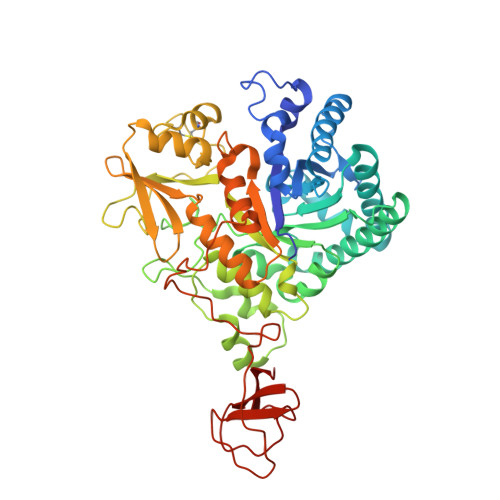Creation of Customized Bioactivity within a 14-Membered Macrolide Scaffold: Design, Synthesis, and Biological Evaluation Using a Family-18 Chitinase
Sugawara, A., Maita, N., Gouda, H., Yamamoto, T., Hirose, T., Kimura, S., Saito, Y., Nakano, H., Kasai, T., Nakano, H., Shiomi, K., Hirono, S., Watanabe, T., Taniguchi, H., Omura, S., Sunazuka, T.(2015) J Med Chem 58: 4984-4997
- PubMed: 26030312
- DOI: https://doi.org/10.1021/acs.jmedchem.5b00175
- Primary Citation of Related Structures:
4Z2G, 4Z2H, 4Z2I, 4Z2J, 4Z2K, 4Z2L - PubMed Abstract:
Argifin, a 17-membered pentapeptide, inhibits chitinase. As argifin has properties that render it unsuitable as a drug development candidate, we devised a mechanism to create the structural component of argifin that bestows the chitinase inhibition and introduce it into a 14-membered macrolide scaffold. Here we describe (1) the designed macrolide, which exhibits ∼200-fold more potent chitinase inhibition than argifin, (2) the binding modes of the macrolide with Serratia marcescens chitinase B, and (3) the computed analysis explaining the reason for derivatives displaying increased inhibition compared to argifin, the macrolide aglycone displaying inhibition in a nanomolar range. This promises a class of chitinase inhibitors with novel skeletons, providing innovative insight for drug design and the use of macrolides as adaptable, flexible templates for use in drug discovery research and development.
- †The Kitasato Institute, Kitasato Institute for Life Sciences and Graduate School of Infection Control Sciences, Kitasato University, 5-9-1, Shirokane, Minato-ku, Tokyo 108-8641, Japan.
Organizational Affiliation:



















